Adler Skywatch: May 2025

Header Image: The springtime Sun sets, illuminating wildflowers with a purple, golden hue.
Daylight Hours This Month
The Sun continues to shine longer each day, adding an hour to daylight hours throughout this month, May 2025.
In the Chicago area, the Sun rises about 5:45 am at the start of the month, and earlier than 5:20 am by the end of the month. It sets around 7:50 pm on May 1, and by nearly 8:20 pm on May 31. We’ll continue to gain daylight time all month long and for part of next month—until the summer solstice on June 20.
How To See The Planets In May, 2025
Finding Venus And Saturn In The Night Sky
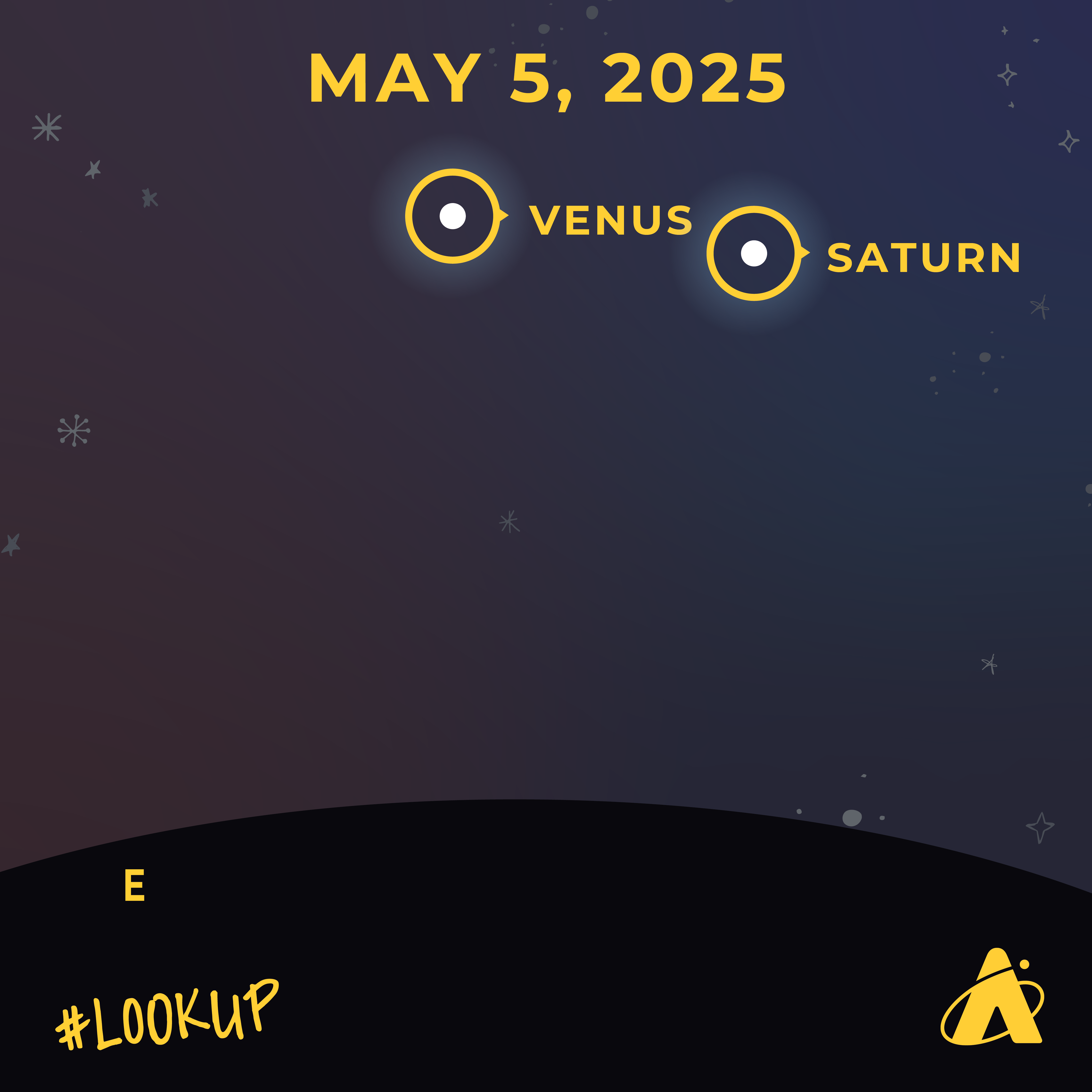
During morning twilight, the brilliant planet Venus and the dimmer planet Saturn rise in the east about an hour or so before the Sun. On May 1, Venus appears just slightly higher in the sky than Saturn does. But after May 7, Saturn appears higher in the sky than Venus, and moves further away from Venus each morning. The morning of May 22, Saturn appears below the bright edge of a waning crescent Moon. The next night, May 23, Venus appears near the edge of the waning crescent Moon.
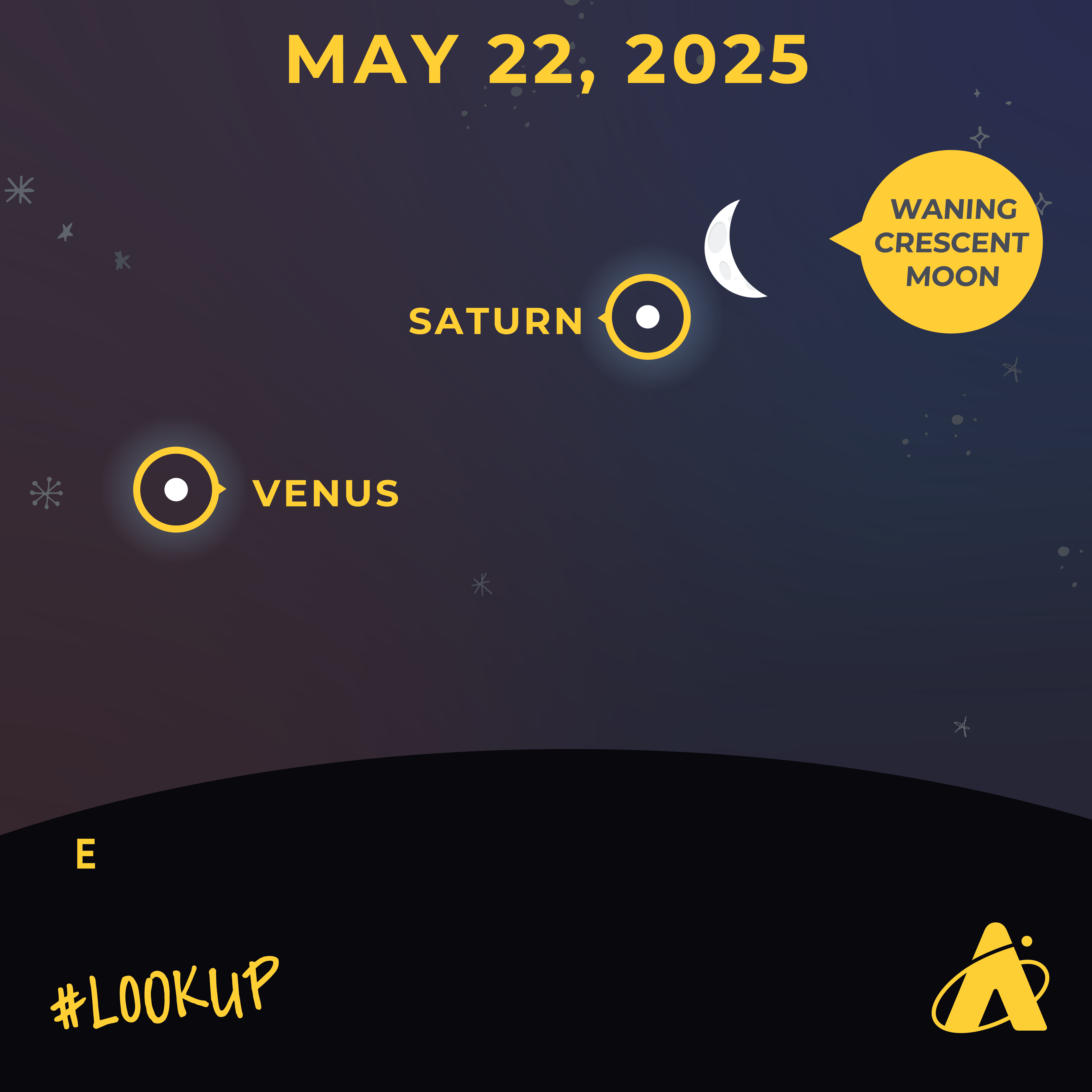
Venus is very bright, nearly minus-4.5 magnitude, outshining anything in the dark sky and easily visible. This month Saturn shines at a respectable first-magnitude in brightness. It appears to move up and away from Venus each morning, and also further away from the Sun, rising before Venus.
Mercury is also in the early-morning sky this month, but it rises so close to the Sun that it’s likely to be invisible in the solar glare.
Where Is Jupiter?
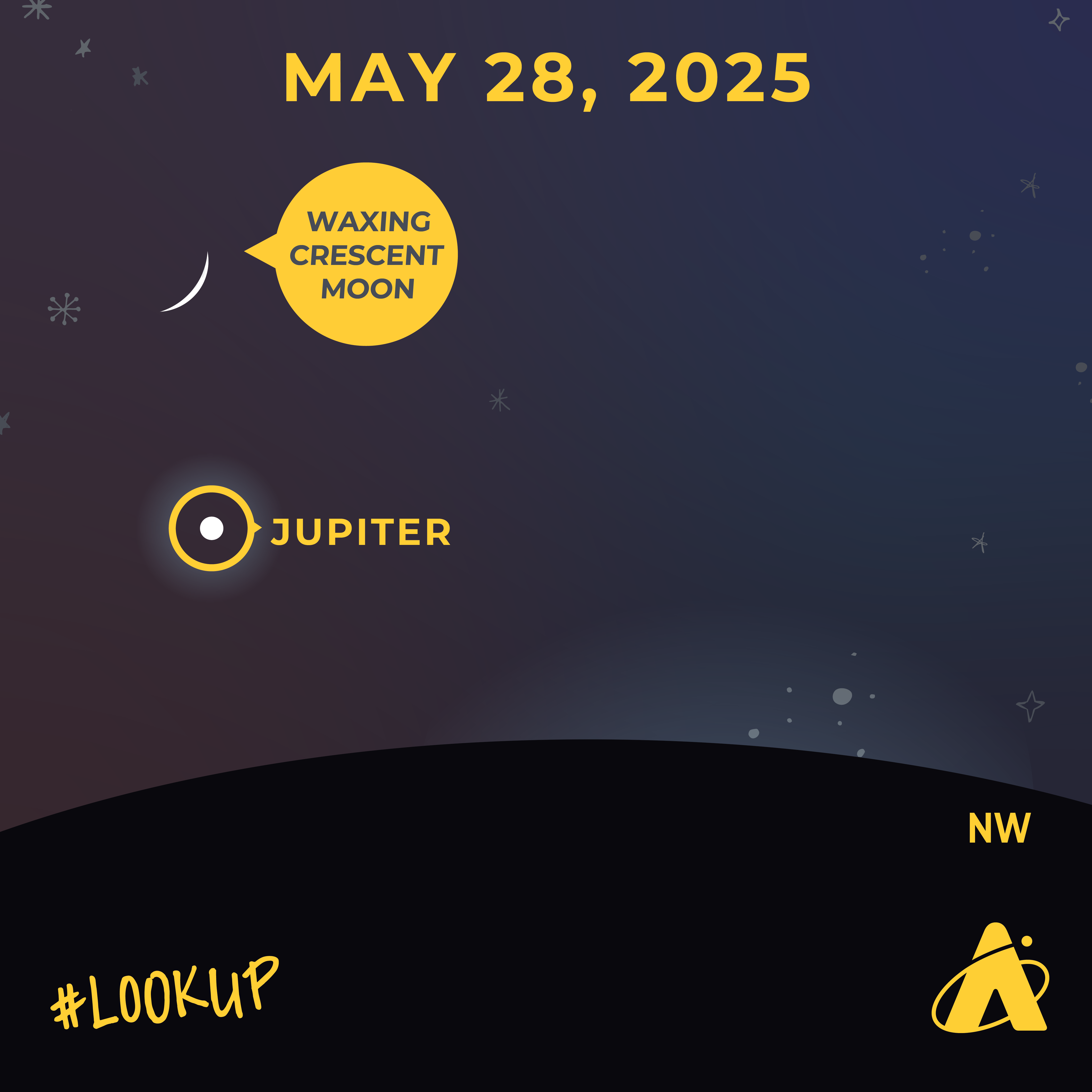
The planet Jupiter is still in the evening sky this month, though it’s getting lower. Jupiter is at about minus-2 magnitude and is low in the west-northwest about 40 minutes to an hour after sunset. Because the Sun sets later each day this month, Jupiter appears lower in the west-northwest as the sky starts to darken. It sets in the west-northwest around 11:00 pm at the start of the month. By month’s end, it sets in the west-northwest about 9:30 pm—only about an hour after the Sun sets, while evening twilight still lingers in the sky.
Your time to see Jupiter is this month, as for most of June, it will appear too close to the Sun to see.
How To See Mars
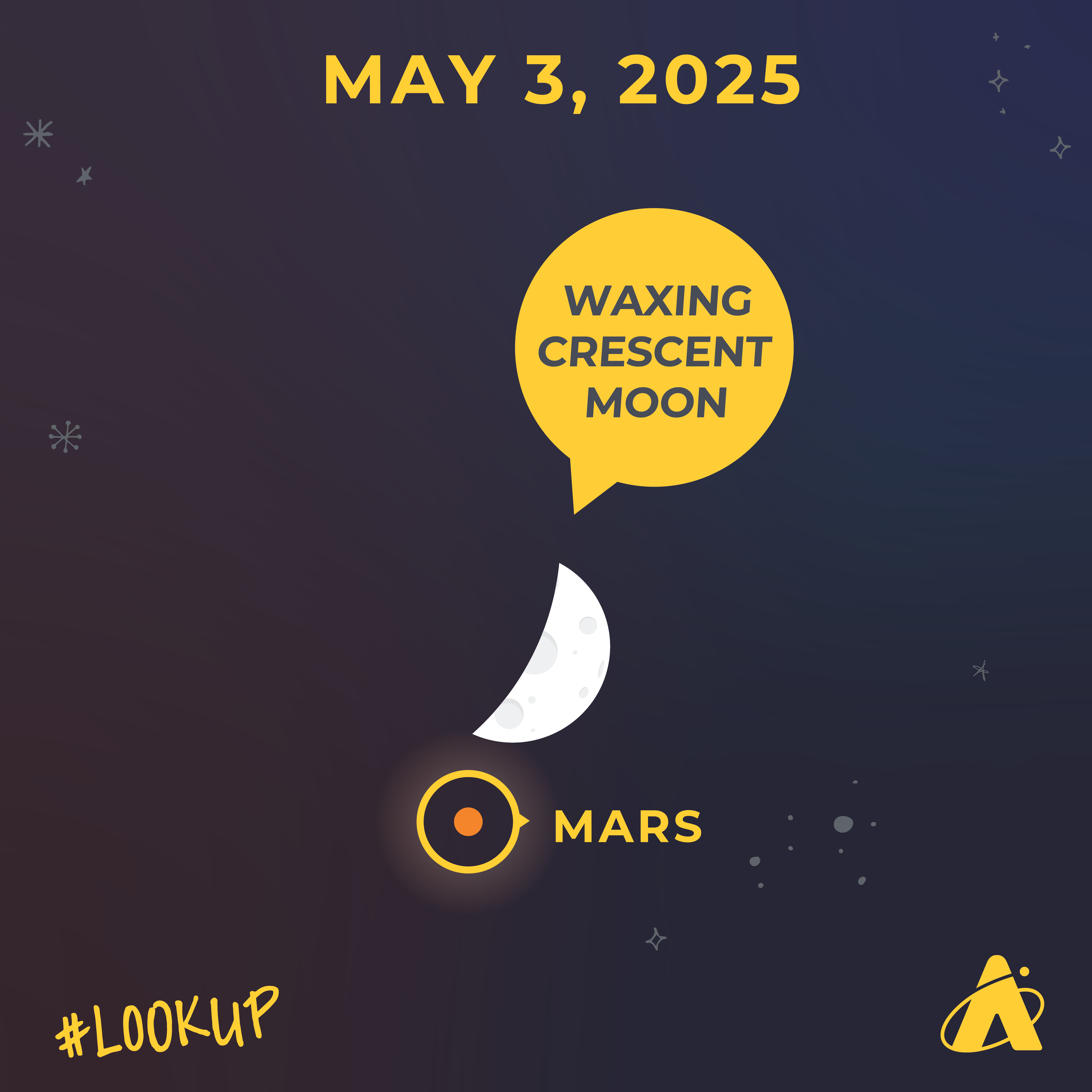
Only the planet Mars is far enough from sunrise and sunset this month to be readily seen in the night sky. At the start of the month, it’s about 60 degrees high in the southwest sky after sunset. Mars is a little brighter than first-magnitude this month. The evening of May 3, it appears only about one degree below the lunar terminator—the dividing line between the dark and light portions—of the first-quarter Moon. The night of May 31, Mars is a few degrees to the left of a waxing crescent Moon. It sets in the west-northwest at about 2:00 am early in the month, and shortly after midnight by month’s end.
How To See The Eta Aquariid Meteor Shower
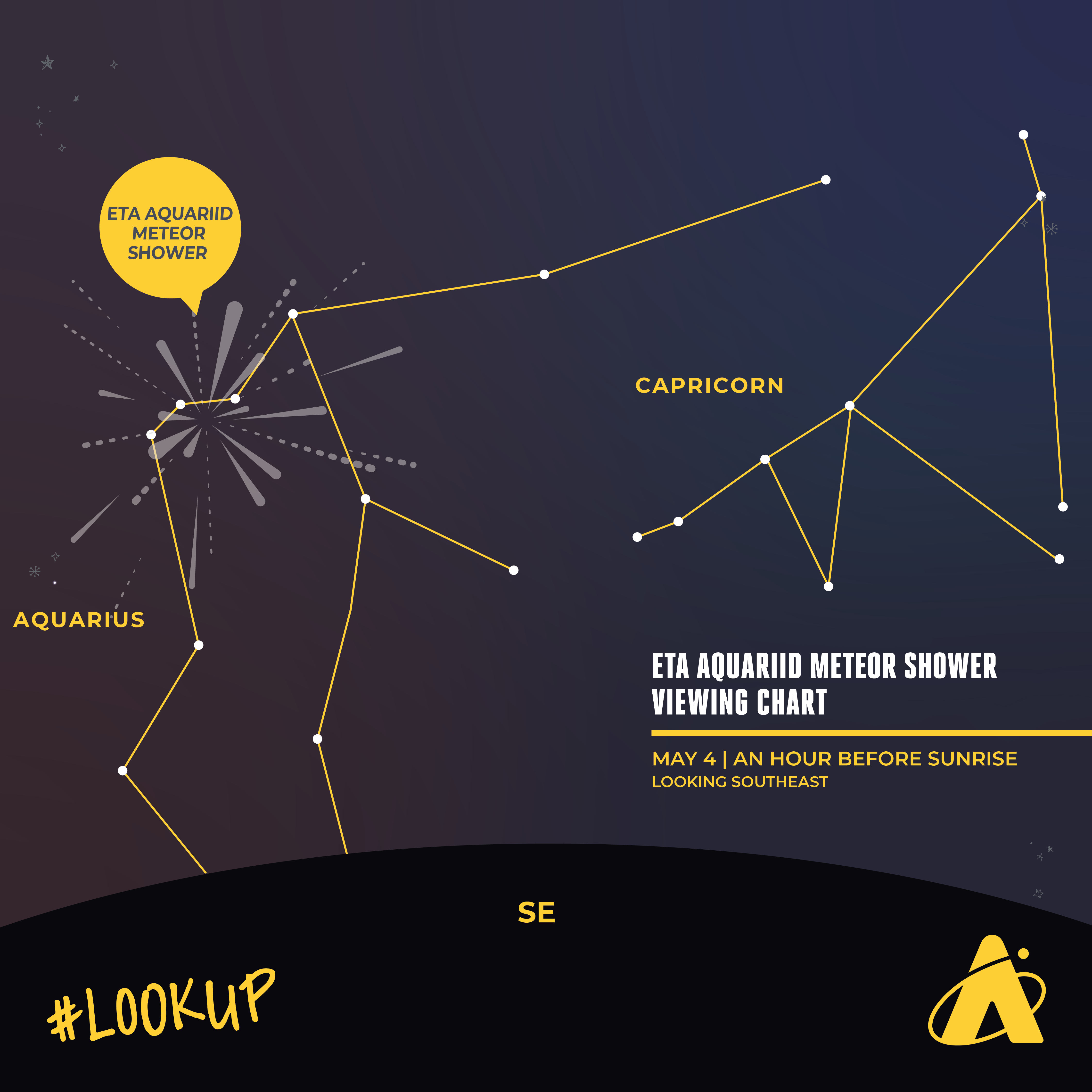
The annual Eta Aquariid meteor shower is active for several weeks in spring, peaking in early May. This year the peak is forecast for the night of May 4 into the early-morning of May 5.
Your best chances of viewing the Eta Aquarids occur in the morning darkness of May 6, after the waxing gibbous Moon has set. In the Chicago area, the moonset is at about 3:00 am. The Eta Aquariid shower is not one of the more popular showers, since its peak is only about ten meteors per hour under a completely dark sky. Also, the southern hemisphere has a better view of the meteors because the shower’s radiant is higher in the sky there than in the northern hemisphere.
However, here’s a different way to look at the Eta Aquariids: meteor showers occur when Earth passes through streams of debris left in space by comets or asteroids. The Eta Aquariids are caused by debris left by perhaps the most famous comet of all: Comet Halley. The last time Comet Halley was visible to the naked eye was in 1986; and it’s next scheduled to appear in the sky in 2061. We are at about the halfway point between the comet’s 86-year near-Earth-visit cycle; so even though we can’t see the comet this year, we can see what it left in space!
Moon Phases

First Quarter Moon: May 4
Full Moon: May 12
Last Quarter Moon: May 20
New Moon: May 26
Please note: these descriptions are for the Chicago area, using Central time.
Subscribe To Skywatch Wednesday This May
Tour the sky with the Adler Planetarium’s Theaters Manager, Nick, in Skywatch Wednesday. Nick uses cutting edge visualizations, NASA images, and astrophotography to show you what you can see in the night sky throughout the year.
Check out Nick’s latest episode for your guide to spring stargazing and details about March’s total lunar eclipse!
Learn From Our Astronomy Educators
Watch recaps of Sky Observers Hangout livestreams this May! Learn how to observe upcoming cosmic happenings, enhance your astrophotography skills, and see celestial objects through a telescope virtually with our astronomy educators.
In the latest episode, Michelle and Hunter observe and discuss the March 2025 total lunar eclipse, answering all our viewers’s most pressing questions!






